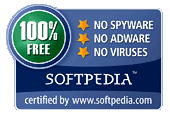UNetbootin
Packages: Ubuntu Debian Fedora Suse Arch Gentoo Source
Introduction
UNetbootin allows you to create bootable Live USB drives for Ubuntu, Fedora, and other Linux distributions without burning a CD. It runs on Windows, Linux, and Mac OS X. You can either let UNetbootin download one of the many distributions supported out-of-the-box for you, or supply your own Linux .iso file if you've already downloaded one or your preferred distribution isn't on the list.Requirements
- Microsoft Windows 2000/XP/Vista/7, or Linux, or Mac OS X 10.5+. Note that resulting USB drives are bootable only on PCs (not on Macs).
- Internet access for downloading a distro to install, or a pre-downloaded ISO file
Features
UNetbootin can create a bootable Live USB drive, or it can make a "frugal install" on your local hard disk if you don't have a USB drive. It loads distributions either by downloading a ISO (CD image) files for you, or by using an ISO file you've already downloaded.
The current version has built-in support for automatically downloading and loading the following distributions, though installing other distributions is also supported:
- Ubuntu (and official derivatives)
- 12.04 LTS
- 13.04
- 13.10
- 14.04 LTS
- Daily CD Images
- Debian
- Stable/Wheezy
- Testing/Jessie
- Unstable/Sid
- Linux Mint
- 13
- 14
- 15
- 16
- 17
- openSUSE
- 10.2
- 10.3
- 11.0
- 11.1
- Factory
- Arch Linux
- 2010.05
- Damn Small Linux
- 4.4
- SliTaz
- Stable
- Cooking
- Puppy Linux
- 4.00
- gNewSense
- deltah-2.1
- FreeBSD
- 6.3
- 7.0
- 7.2
- 8.0
- NetBSD
- 4.0
- Fedora
- 17
- 18
- 19
- 20
- Rawhide
- PCLinuxOS
- 2010
- Sabayon Linux
- 5.1
- 5.2
- Gentoo
- 2007.0
- 2008.0
- MEPIS
- SimplyMEPIS 8
- AntiX 8
- Zenwalk
- 5.2
- Slax
- 6
- Dreamlinux
- 3.2
- Elive
- Development
- CentOS
- 4
- 5
- 6
- Mandriva
- 2007.1
- 2008.0
- 2008.1
- LinuxConsole
- 1.0.2009
- Frugalware Linux
- Stable
- Testing
- Current
- xPUD
- 0.9.2
UNetbootin can also be used to load various system utilities, including:
- Parted Magic, a partition manager that can resize, repair, backup, and restore partitions.
- SystemRescueCD, a system repair, backup and recovery tool.
- Super Grub Disk, a boot utility that can restore and repair overwritten and misconfigured GRUB installs or directly boot various operating systems
- Dr.Web Antivirus, F-Secure Rescue CD, and Kaspersky Rescue Disk, which remove malware from Windows installs.
- Backtrack, a utility used for network analysis and penetration testing.
- Ophcrack, a utility which can recover Windows passwords.
- NTPasswd, a utility which can reset Windows passwords and edit the registry.
- Gujin, a graphical bootloader that can also be used to boot various operating systems and media.
- Smart Boot Manager (SBM), which can boot off CD-ROM and floppy drives on computers with a faulty BIOS.
- FreeDOS, which can run BIOS flash and other legacy DOS utilities.
» See Using a UNetbootin Plugin.
Installation & Screenshots
- If using Windows, run the file, select an ISO file or a distribution to download, select a target drive (USB Drive or Hard Disk), then reboot once done. If your USB drive doesn't show up, reformat it as FAT32.
- If using Linux, make the file executable (using either the command
chmod +x ./unetbootin-linux, or going to Properties->Permissions and checking "Execute"), then start the application, you will be prompted for your password to grant the application administrative rights, then the main dialog will appear, where you select a distribution and install target (USB Drive or Hard Disk), then reboot when prompted. - After rebooting, if you created a Live USB drive by selecting "USB Drive" as your install target, press the appropriate button (usually F1, F2, F12, ESC, or backspace) while your computer is starting up to get to your BIOS boot menu and select USB drive as the startup target; otherwise if there's no boot selection option, go to the BIOS setup menu and change the startup order to boot USB by default. Note that Live USB drives are bootable only on PCs (not on Macs). Otherwise, if you did a "frugal install" by selecting "Hard Disk" as your install target, select the UNetbootin entry from the Windows Boot Menu as the system boots up.
Removal Instructions (Applicable only to Hard Disk / "frugal installs")
If using Windows, UNetbootin should prompt you to remove it the next time you boot into Windows. Alternatively, you can remove it via Add/Remove Programs in the Control Panel.If using Linux, re-run the UNetbootin executable (with root priveledges), and press OK when prompted to uninstall.
Removal is only required if you used the "Hard Drive" installation mode; to remove the bootloader from a USB drive, back up its contents and reformat it.
Uninstalling UNetbootin simply removes the UNetbootin entry from your boot menu; if you installed an operating system to a partition using UNetbootin, removing UNetbootin will not remove the OS.
To manually remove a Linux installation, you will have to restore the Windows bootloader using "fixmbr" from a recovery CD, and use Parted Magic to delete the Linux partition and expand the Windows partition.
Installing Other Distributions Using UNetbootin
Download and run UNetbootin, then select the "disk image" option and supply it with an ISO (CD image).UNetbootin doesn't use distribution-specific rules for making your live USB drive, so most Linux ISO files should load correctly using this option. However, not all distributions support booting from USB, and some others require extra boot options or other modifications before they can boot from USB drives, so these ISO files will not work as-is. Also, ISO files for non-Linux operating systems have a different boot mechanism, so don't expect them to work either.
What translations are available, and how can I use them?
A number of translations are included in the latest UNetbootin release. See the Translations Page for the status of each.If a translation corresponding to your system's native language has already been included into UNetbootin, it should automatically load the corresponding translation. Alternatively, you can force the language to use via the lang=es command-line option, where you substitute es with the the 2-letter ISO 639-1 code for your language.
If you'd like to contribute a translation, please use Launchpad Translations. If you are new to Launchpad, you will first have to join the corresponding Ubuntu Translators group for the language you intend to translate. For information on using the Launchpad Translations system, see the translations help page.
» See UNetbootin Translations
FAQs
Distribution X isn't on the list of supported distributions, will it work?» Maybe, see Installing Other Distributions Using UNetbootin.
UNetbootin isn't able to download the distribution, what should I do?
Download the ISO straight from the website, then provide it to UNetbootin via the diskimage option.
My USB stick isn't booting, what should I do?
Reformat the USB drive as FAT32, then use UNetbootin again to put your distribution on the USB stick.
My USB stick/hard drive isn't detected, what should I do?
Reformat the USB drive as FAT32, then use UNetbootin again. If it still isn't showing up, use the targetdrive command line option.
How do I use UNetbootin from the command line?
» See UNetbootin Command Line Options.
How does UNetbootin work, and what does it do?
» See How UNetbootin Works.
» See USB Drive and Hard Disk Install Modes.
Where can I ask questions, get help, report bugs, request new features, etc?
First, make sure you are using the latest version available on this website.
» See Launchpad Answers to ask questions and get help.
» See Launchpad Bugs to file a bug report.
Does UNetbootin have any spyware, viruses, trojans, or other malware?
No; though some anti-virus products (Kaspersky) raise "Trojan.generic" warnings due to the auto-uninstall feature, these are false positives. Just make sure you obtain UNetbootin from the official downloads page on Sourceforge not some shady third-party source. If you're absolutely paranoid, you can check the source code and compile it yourself.
Where's the source code, and how can I compile or modify it?
Source code is on Github, though you may prefer a tarball.
» See Compiling UNetbootin.
» See UNetbootin Command Line Options.
» See Building a UNetbootin Plugin.
» See Using a UNetbootin Plugin.
» See Building a Custom UNetbootin Version.
» See List of Custom UNetbootin Versions and Plugins.
Thank you!
 Download(for Windows)
Download(for Windows) Download(for Linux)
Download(for Linux) Download(for Mac OS X)
Download(for Mac OS X)

No comments:
Post a Comment